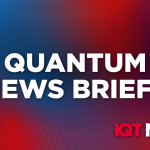IBM’s Qiskit graduates from SDK to full quantum software stack

Perhaps more than any other company not identifiable as a quantum start-up, IBM has pushed the quantum computing sector forward in recent years with frequent hardware advancement and annual announcements of new quantum processors. The company’s Qiskit open source software development kit also has been an important piece of its approach and IBM this week announced the evolution and expansion of Qiskit beyond a SDK status and into a full quantum computing software stack.
Qiskit as an SDK, since launching in 2017, has allowed more than 600,000 users to build and run quantum circuits on IBM’s quantum hardware systems, resulting in the execution of more than 3 trillion quantum circuits to date. IBM said the latest version of Qiskit expansion will equip members of the IBM Quantum Network with the most performant Qiskit capabilities available to discover the next generation of quantum algorithms in their respective domains as they aim to achieve their own definition of quantum advantage.
Dr. Jerry Chow, IBM Fellow and Director of Quantum Systems and Runtime Technology, said. “To make our underlying quantum systems [like the recently announced Heron processor] useful, where we can actually leverage the quantum circuits that are on those quantum systems, we need Qiskit. It is our overall software platform that really unlocks this potential. So we have this simple equation that says that using Qiskit plus our quantum systems really drives quantum computing towards utility-scale work.”
The newest version of Qiskit includes the capabilities of more than 100 software releases over the last seven years, including:
- The stable release of Qiskit SDK 1.x for building, optimizing, and visualizing quantum circuits.
- AI-powered optimization of quantum circuits for quantum hardware, embedded in the Qiskit Transpiler Service.
- Simplified execution modes for the Qiskit Runtime Service which can be tailored for performant execution of quantum circuits on quantum hardware.
- The Qiskit Code Assistant, powered by watsonx-based generative AI models, to automate the development of quantum code.
- The Qiskit Serverless open-source tool to run quantum-centric supercomputing workloads across quantum hardware and classical clusters.
Chow continued, “In particular, the tool set for Qiskit really needs to be able to handle a number of things. It needs to leverage advanced classical and quantum computation. It needs to be able to optimize a problem for efficient execution on a quantum system, and then actually execute the quantum circuits on the actual real systems. We’ve been developing a lot of these tools over the past few years and now it’s really coming together to comprise this much larger Qiskit software stack.”
IBM officials said the deployment of new capabilities and improvements within Qiskit are enabling users to optimize circuits for quantum hardware at a rate 39 times faster than previous version Qiskit 0.33. Qiskit also demonstrates an average of 3 times reduction in memory usage compared to Qiskit 0.43. Further, the most current version of Qiskit is engineered to reduce the overhead and shrink the footprint of circuits, compared to Qiskit 0.43. With the new execution modes, utility-scale workloads are up to 5 times faster, using the batch mode, compared to not using this mode. And using the Qiskit Transpiler Service as designed, users can reduce circuit depth by approximately 40 percent by combining AI and heuristic passes, compared to using the transpiler without AI features.
“The global adoption of quantum computing — and the discovery of quantum advantage — will require a combination of leading quantum hardware alongside a robust and performant software stack to run workloads,” said Jay Gambetta, IBM Fellow and Vice President, IBM Quantum. “These two pillars are fundamental to the algorithm discovery that has begun on utility-scale quantum hardware. As a growing quantum ecosystem maps their most difficult problems to quantum circuits, the Qiskit stack will be the cornerstone to exploring the computational spaces in which quantum computing excels.”
“Qiskit provides an important collection of tools for E.ON as we explore how quantum computing could help us navigate the financial and operational complexities of the energy industry,” said Giorgio Cortiana, Head of Data and AI – Energy Intelligence, E.ON. “As a performant foundation to build and discover quantum algorithms that can be applied to business use cases, Qiskit enables our team to advance utility-scale prototypes, with the goal of finding new solutions to challenges in the European energy sector.”
“We started using Qiskit for our quantum computing efforts several years ago as part of an effort to help develop a quantum-ready workforce.” said Stephan Eidenbenz, senior scientist at Los Alamos National Laboratory. “Laboratory researchers use Qiskit daily to interact with IBM’s quantum hardware backends and to test new algorithmic ideas. The open nature of Qiskit also offers our team the ability to add compiler optimization passes and allows pulse-level access.”
Dan O’Shea has covered telecommunications and related topics including semiconductors, sensors, retail systems, digital payments and quantum computing/technology for over 25 years.
























